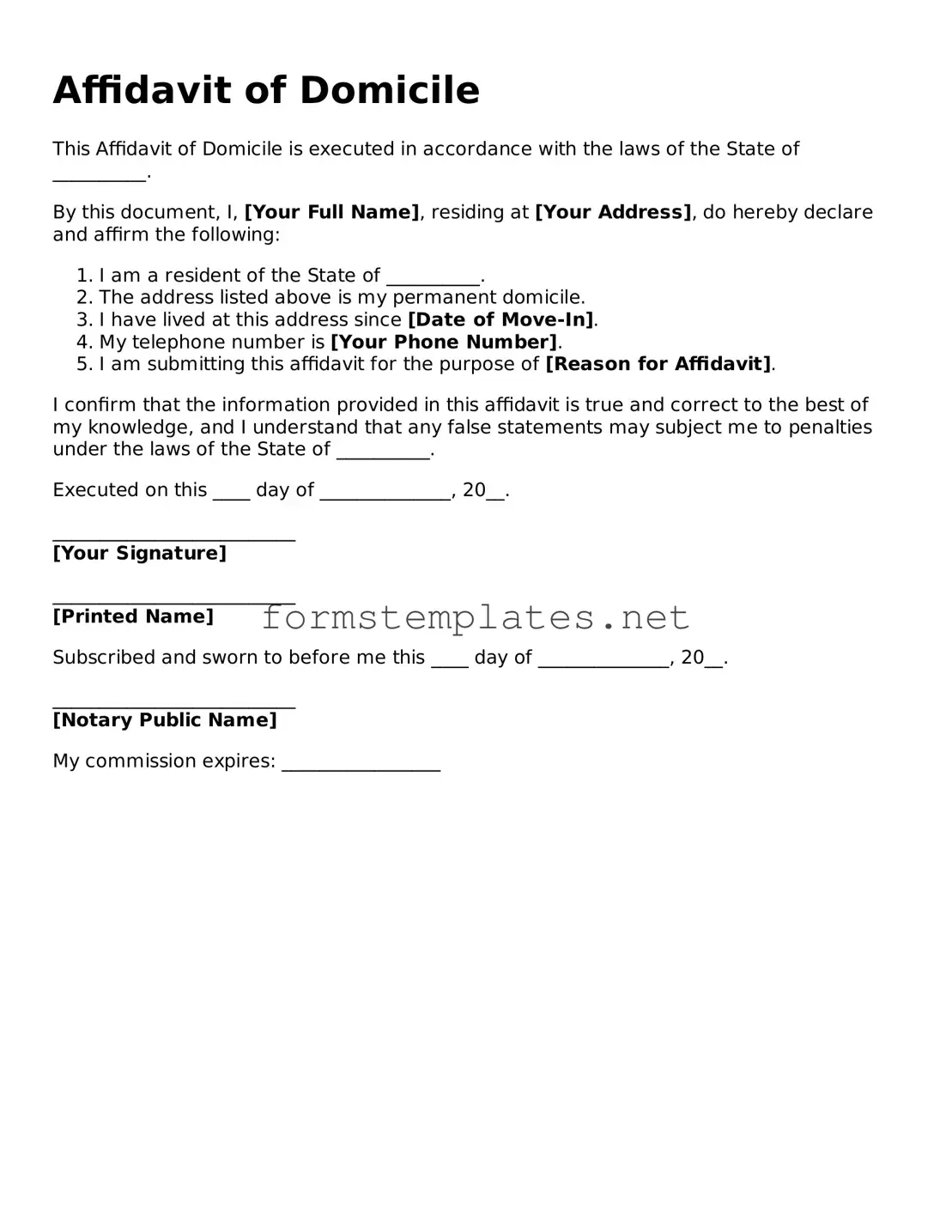Affidavit of Domicile
This Affidavit of Domicile is executed in accordance with the laws of the State of __________.
By this document, I, [Your Full Name], residing at [Your Address], do hereby declare and affirm the following:
- I am a resident of the State of __________.
- The address listed above is my permanent domicile.
- I have lived at this address since [Date of Move-In].
- My telephone number is [Your Phone Number].
- I am submitting this affidavit for the purpose of [Reason for Affidavit].
I confirm that the information provided in this affidavit is true and correct to the best of my knowledge, and I understand that any false statements may subject me to penalties under the laws of the State of __________.
Executed on this ____ day of ______________, 20__.
__________________________
[Your Signature]
__________________________
[Printed Name]
Subscribed and sworn to before me this ____ day of ______________, 20__.
__________________________
[Notary Public Name]
My commission expires: _________________
